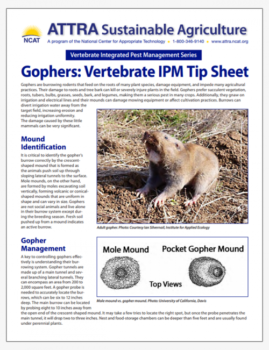Gophers: Vertebrate IPM Tip Sheet
Vertebrate Integrated Pest Management Series
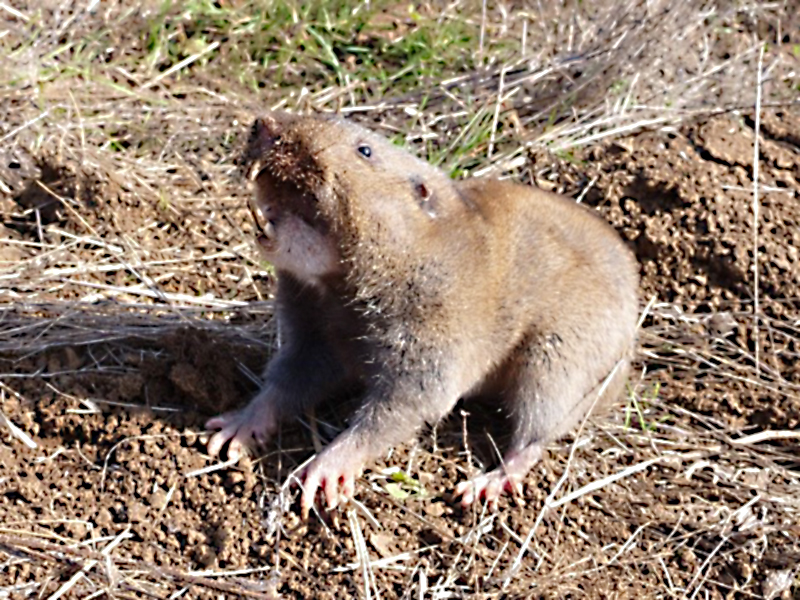
Adult gopher. Photo: Ian Silvernail, Institute for Applied Ecology
By Martin Guerena, NCAT Agriculture Specialist
Introduction
Gophers are burrowing rodents that feed on the roots of many plant species, damage equipment, and impede many agricultural practices. Their damage to roots and tree bark can kill or severely injure plants in the field. Gophers prefer succulent vegetation, roots, tubers, bulbs, grasses, seeds, bark, and legumes, making them a serious pest in many crops. Additionally, they gnaw on irrigation and electrical lines and their mounds can damage mowing equipment or affect cultivation practices. Burrows can divert irrigation water away from the target field, increasing erosion and reducing irrigation uniformity. The damage caused by these little mammals can be very significant.
Mound Identification
It is critical to identify the gopher’s burrow correctly by the crescent shaped mound that is formed as the animals push soil up through sloping lateral tunnels to the surface. Mole mounds, on the other hand, are formed by moles excavating soil vertically, forming volcanic or conical-shaped mounds that are uniform in shape and can vary in size. Gophers are not social animals and live alone in their burrow system except during the breeding season. Fresh soil pushed up from a mound indicates an active burrow.
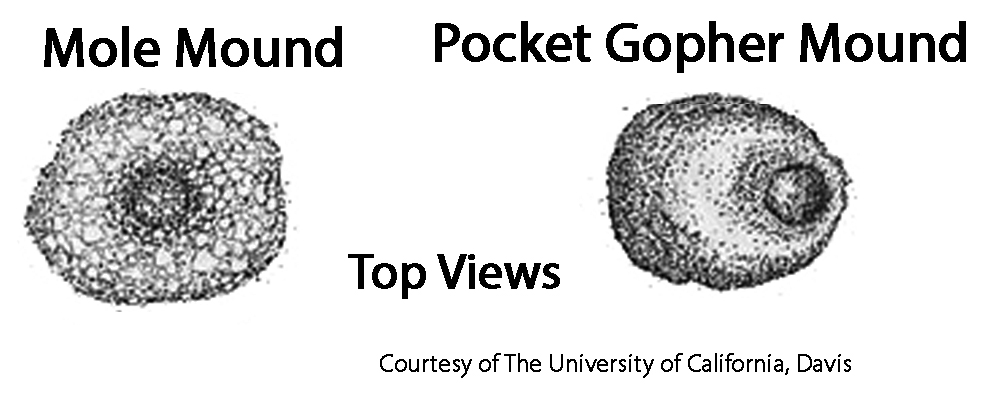
Mole mound vs. gopher mound.
Gopher Management
A key to controlling gophers effectively is understanding their burrowing system. Gopher tunnels are made up of a main tunnel and several branching lateral tunnels. They can encompass an area from 200 to 2,000 square feet. A gopher probe is needed to accurately locate the burrows, which can be six to 12 inches deep. The main burrow can be located by probing eight to 10 inches away from the open end of the crescent-shaped mound. It may take a few tries to locate the right spot, but once the probe penetrates the main tunnel, it will drop two to three inches. Nest and food storage chambers can be deeper than five feet and are usually found under perennial plants.
-
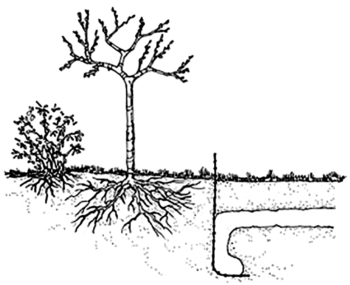
Example of barrier fencing. Illustration: Jenifer Rees, Washington Department of Fish and Wildlife
Exclusion. Keeping gophers out of areas that are intensive gardens or nurseries, or contain high value ornamentals, is a strategy that requires the use of barriers, baskets, or boxes made with stainless or galvanized steel.
- Habitat Modification. The Burrow Blocker™ is a device that fills tunnels with a slurry of sand and water. The water seeps into the ground, leaving the sand to fill the burrows. Gopher Goo® is a product made from cornstarch that works on the same principle as Burrow Blocker. The dry powder is placed in the burrow with water, where it expands and hardens into a strong gel material. See Resources for contact information. Disking or tilling destroys burrows and may force gophers to other areas, but in orchards they may return to dig in soft, friable soil.
- Repellents. Many repellents can be expensive, such as vibrating or ultrasonic devices. Furthermore, reviews from extension research and testimonials from gardening blogs classify these devices as ineffective. Repellents such as castor oil, predator urine, fish emulsion, and ammonia can be effective for single plants or small areas, but have a short effective period due to evaporation or volatilization. Plants such as gopher purge, castor bean, and garlic have not been shown to repel gophers from an area (Salmon and Baldwin, 2009). Thomas Wittman of Gophers Limited recommends aromatic, herbaceous, drought-tolerant perennials such as lavender, sages, rosemary, thyme, and oregano as the best plant choices for repellents (Whitman, no date). Sour clover (Melilotus indica) contains coumarin, which has anticoagulant properties and is considered a gopher deterrent by some farmers.
-
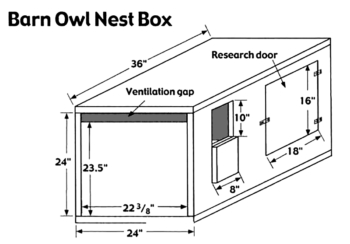
Owl box design. Illustration: The Birders Report
Predators. An integrated pest management strategy in areas where there are large rodent populations is to attract their natural predators. Raptors alone will not eliminate a gopher problem, but they can help reduce gopher populations, especially when integrated with other methods. Diurnal raptors such as hawks, falcons, and eagles require perches or tall trees, cover, and habitat. Barn owls are nocturnal raptors that can be attracted to a farm area through the use of owl boxes. Blue herons and egrets hunt gophers and other rodents in some fields. Snakes also prey on gophers, but have a slow metabolism and will take four to eight weeks between hunts. Coyotes and wildcats prey on gophers but are not reliable to keep populations down, due to their transitory nature. Domestic cats are patient and effective gopher predators that could keep populations under control, depending on the infestation. Dogs, especially terriers, also prey on gophers but dig and can cause more damage to fields and gardens than the gophers. Note that providing owl boxes (as well as raptor perches and other habitat boxes, such as bat boxes) is a cost-sharable practice under the USDA-NRCS Environmental Quality Incentive Program (EQIP).
- Traps. Trapping is an effective method of control for small areas or light infestations. There are basically three types of gopher traps: wire, box, and black hole. Wire traps have prongs or pincers that will squeeze the gopher when tripped. Examples of these traps are Cinch and Macabee traps. Box traps use a spring-loaded wire bar that snaps once triggered, squeezing the gopher in the box. Black hole traps are similar to box traps, except that they are a plastic cylinder, spring loaded with a noose mechanism. The Macabee, box, and black hole traps are used in the main tunnels, and two should be placed facing opposite directions. The cinch traps are usually used in the sloping lateral tunnels and, unlike the other traps, you can see whether or not the cinch trap has been sprung while it is still in the hole.
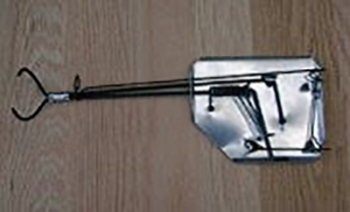
Cinch trap. Photo: Rex Dufour, NCAT
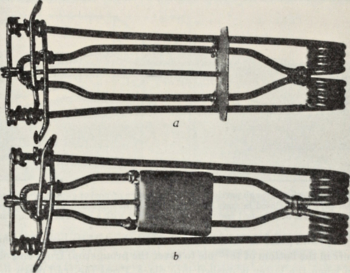
- Macabee trap. Photo: Wikimedia Commons
- Baiting. The use of toxic baits can pose threats to wildlife, pets, and children, so they should be used with extreme caution. Baits accepted in certified organic production will be mentioned in this publication. For conventional baits, such as strychnine and anticoagulants, consult your local Extension websites for guidance and always read the label of all pesticides.
-
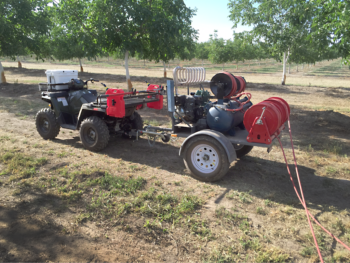
Pressurized Exhaust Rodent Controller. Photo: Perry’s Wildlife Control
Fumigation. Fumigation with smoke or gas in the burrow has a marginal effect because of the gopher’s ability to detect the gas or smoke and quickly seal off the burrow. A new device called Pressurized Exhaust Rodent Controller (PERC) has shown some promise. Pure exhaust (2.5% carbon monoxide, CO) is captured off a gas engine that drives a compressor, cooled, pressurized, and injected into the burrow of a burrowing rodent with multiple injector hoses. The breathable air in the burrow is purged very rapidly. The rodent is engulfed almost immediately in a high concentration of CO gas and overcome before it has a chance to escape or block the burrow. This is effective in soils with high moisture that prevent the gas from seeping out, as opposed to drier soils with more air space. This method is prohibited in organic production.
- Explosive Devices. The Rodenator is a device that injects propane and oxygen into the burrow, then ignites the gaseous mixture, causing an explosion that usually kills the gopher and collapses the tunnels. This control method is hazardous and requires caution, especially in dry areas. These propane devices are not allowed in organic production.
- Crop Rotation. Grains, which have small fibrous roots, cannot support gophers nutritionally compared with fleshy-rooted vegetation like trees, vegetables, or alfalfa. In addition to controlling burrowing rodents, crop rotation helps manage soil fertility and aids in reducing soil-borne diseases, weeds, and insect pests.
- Flooding. Flooding burrows through irrigation or forcing water with hoses creates an undesirable habitat by causing a muddy tunnel system that will affect the gopher’s fur and claws. As the soil becomes saturated, it will restrict the exchange of gases in the burrow, causing the gopher to seek higher dry ground. Many times the gopher will run out of its escape tunnel, where a dog or a shovel can greet it.
References
Salmon, T. P., and R. A. Baldwin. 2009. Pest Notes: Pocket Gophers. UC ANR Publication 7433.
Wittman, Thomas. No date. Vertebrate Pest Control Without Poisons.
Further Resources
Gophers Limited: Non-Toxic Humane Pest Control
Living with Wildlife: Pocket Gophers. Washington Department of Fish and Wildlife.
Meadow Voles and Pocket Gophers: Management in Lawns, Gardens, and Cropland. 2011. By D. Gunn, R. Hirnyck, G. Shewmaker, S. Takatori, and L. Ellis. University of Idaho.
Pocket Gopher Management Guidelines. University of California Statewide Integrated Pest Management Program.
Gophers: Vertebrate IPM Tip Sheet
By Martin Guerena, NCAT Agriculture Specialist
Published April 2018
© 2018
IP 557
This publication is produced by the National Center for Appropriate Technology through the ATTRA Sustainable Agriculture program, under a cooperative agreement with USDA Rural Development. This publication was also made possible in part by funding from the National Institute of Food and Agriculture, U.S. Department of Agriculture, award number 2013-51106-20970.

